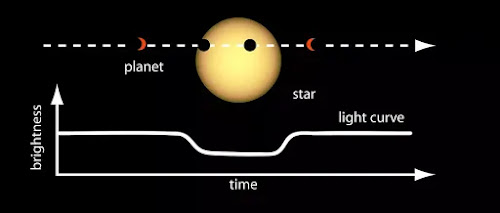Can James Webb space telescope helps researchers in search of alien life?
In olden days, we used to look into the space using small
ground based telescopes. But Earth's atmosphere blocks and absorbs most of the
light of some wavelengths, so they can't reach the ground. That is why we are
sending the telescopes into the space for finding out the alien life and to
learn more about the cosmos. Every telescope is unique and has varying
capabilities of recording different frequencies in electromagnetic spectrum, so
that we can study the universe in different wavelengths of light observed.
NASA, in conjunction with other countries and space agencies, started a space
observatory program called as 'The Great Observatories'.
Some of the great observatories include Hubble space
telescope, Compton gamma ray observatory, Chandra X-Ray observatory and Spitzer
Space Telescope. One of the important telescope in the above mentioned list is
Spitzer space telescope which has the capability of observing infrared light at
high temperature and due to this reason the Spitzer space telescope was sent
into deep space to compensate the cooling required for the system for its
efficient working. It was launched in the year 2003 and explored the universe
in infrared region for almost 16 years. On January, 2020 the Spitzer space
telescope retired, the mission engineers kept it in safe mode and ceased all of
its operations.
Now, the NASA is set to launch with a new telescope which not
only replaces Spitzer space telescope but also way more efficient than it
called as 'James Webb space telescope' simply called JWST. Because of its
capability, which is 100 times clearer than Hubble space telescope, it became
very popular before its launching itself. By this telescope, NASA is expecting
to create history in space exploration and is also expecting to find alien life
with the technology that was especially designed and integrated in this
telescope.
 |
| James_Webb_space_telescope_into_the_dark_space Image credit: NASA/Chris Gunn |
What is infrared light?
In 1800's, the astronomer Sir William Herschel, used a prism
to refract Sun's light and he recorded temperature of each visible spectrum of
light. Then he noticed that temperature is increasing form blue to red. This
wasn’t so surprising until he observed that the temperature beyond red is still
increasing which gave him the thought that there might exist some invisible
light beyond red and named them as 'calorific rays', later termed as 'infrared
rays'. Infrared light is the part of EM spectrum which lies between 700 nm to
1mm (longer waves than visible light).
 |
| Electromagnetic_spectrum_Into_the_dark_space CC BY-SA 3.0, https://commons.wikimedia.org/w/index.php?curid=2521356 |
From James Webb telescope we can see infrared light (near
infrared and mid infrared) as similar to Spitzer space telescope but with more
accuracy because of its improved sensitivity and the new technology introduced
in this telescope. From this we can observe the light inside the gas clouds,
galaxies, nebulae and more in infrared vision. As said by NASA, It is the most
powerful space science observatory ever built.
How can we find alien life?
Well, that’s simple, it’s by observing light from a planet we
can find life on that planet.
Explanation: When a planet is orbiting its home star, it
transits between the observer and the star, which decreases the apparent
brightness of incoming light from the star. By this astronomers and
cosmologists can trace new planets called 'exoplanets'.
 |
| Transit_method_to_detect_Exoplanets_Into_the_dark_space Image credit: NASA Ames |
Similar process is used to find the alien life. When we
observe light from a planet some of the light is absorbed by the planet. For
example, if trees are present on that planet they absorb some of the light of
wavelength (430nm and 662nm) to prepare their food by photosynthesis process.
If light observed by the telescopes doesn't have that wavelength of light then
we can say that life on that planet may exist. Spitzer space telescope uses
this technology but it can't measure very accurately due to its limitations. Same
technology is employed in JWST but with improved accuracy and capability to
watch into the deep space, inside the galaxies and observe infrared light
produced in big bang.
In Hubble space telescope, the primary mirror used is of 2.4
meters but in JWST 6.5 meters primary mirror is adapted, so that it can observe
more light. But the challenge is observing infrared light causes telescope to
heat up so much. Therefore, NASA is introducing a specially designed cooling
system in it to attend its needs. Like that of Hubble space telescope (about 547 kms above earth) the JWST doesn't orbit around the earth but it orbit around the Sun at 1.5 million kms beyond earth's orbit, due to this much of distance repair or upgrade of hardware seems impossible.
 |
| JWST_deployment_Into_the_dark_space Image credit: NASA |
NASA is continuously delaying the launch date of JWST due to
the technical challenges and high budget (more than 1000 crores USD). It is
using ultra modern technology to attend the challenges of JWST. Due to this
reason the budget is increasing exponentially and taking more time to build. NASA
expected to launch the JWST in 2015 but got delayed. Recently NASA announced
launch date of JWST as 30 march, 2021.
For the first time in the history of mankind, JWST provides
us a opportunity to observe the birth of universe, secrets and alien life. This
telescope will work for 5 years continuously but NASA set an target to work it
for 10 years. If possible we can find alien life with this telescope and will
become 1st generation to see them. All astronomers and cosmologists are eagerly
waiting for launch of JWST and NASA was trying to make this telescope with
their high efforts. Let's wait until the launch of JWST.
Even i'm also eagerly waiting for that moment, you too?
Share your ideas and thoughts in comment section below.
For more information click here and for updates please follow my site,
Thank you.
Interesting
ReplyDeleteYaq
Deletethank you
DeleteSuperb
ReplyDeletethank you
Delete